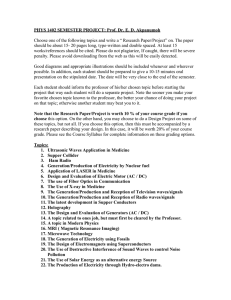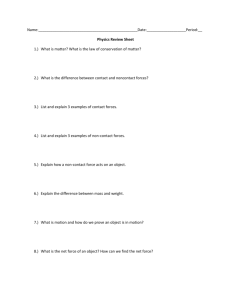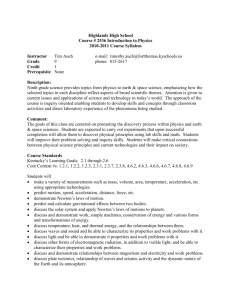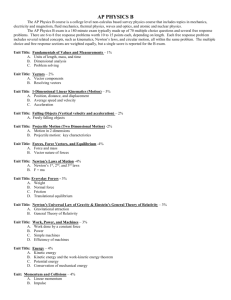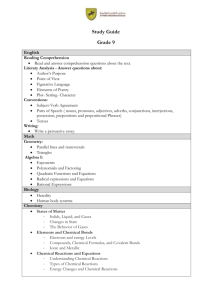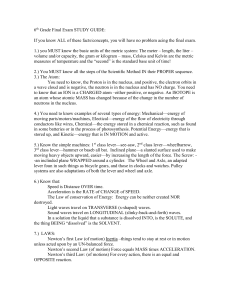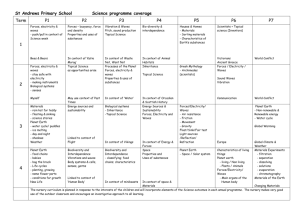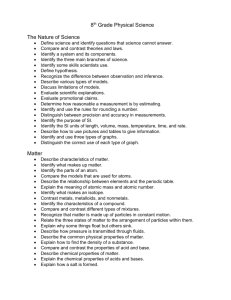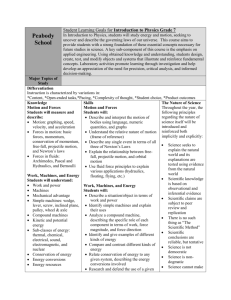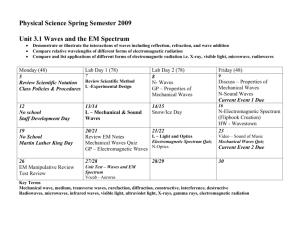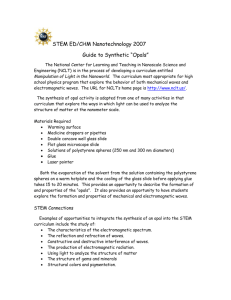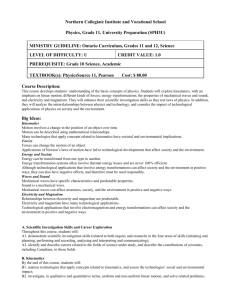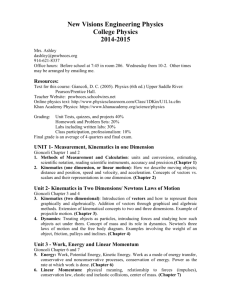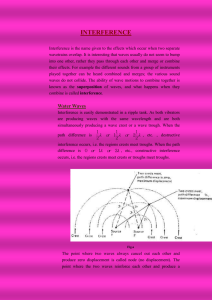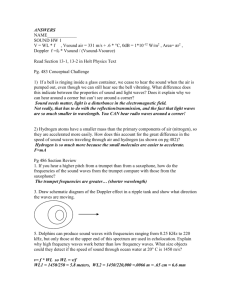Essential Learning Outcomes: Physical Science - Holden R
advertisement
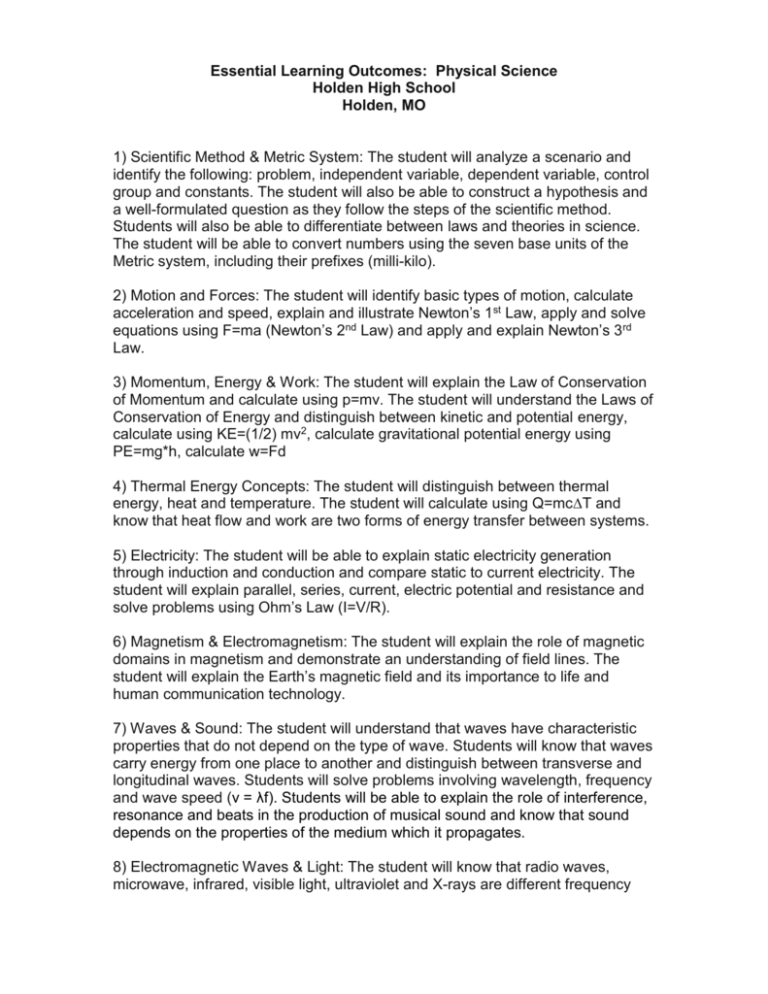
Essential Learning Outcomes: Physical Science Holden High School Holden, MO 1) Scientific Method & Metric System: The student will analyze a scenario and identify the following: problem, independent variable, dependent variable, control group and constants. The student will also be able to construct a hypothesis and a well-formulated question as they follow the steps of the scientific method. Students will also be able to differentiate between laws and theories in science. The student will be able to convert numbers using the seven base units of the Metric system, including their prefixes (milli-kilo). 2) Motion and Forces: The student will identify basic types of motion, calculate acceleration and speed, explain and illustrate Newton’s 1st Law, apply and solve equations using F=ma (Newton’s 2nd Law) and apply and explain Newton’s 3rd Law. 3) Momentum, Energy & Work: The student will explain the Law of Conservation of Momentum and calculate using p=mv. The student will understand the Laws of Conservation of Energy and distinguish between kinetic and potential energy, calculate using KE=(1/2) mv2, calculate gravitational potential energy using PE=mg*h, calculate w=Fd 4) Thermal Energy Concepts: The student will distinguish between thermal energy, heat and temperature. The student will calculate using Q=mc∆T and know that heat flow and work are two forms of energy transfer between systems. 5) Electricity: The student will be able to explain static electricity generation through induction and conduction and compare static to current electricity. The student will explain parallel, series, current, electric potential and resistance and solve problems using Ohm’s Law (I=V/R). 6) Magnetism & Electromagnetism: The student will explain the role of magnetic domains in magnetism and demonstrate an understanding of field lines. The student will explain the Earth’s magnetic field and its importance to life and human communication technology. 7) Waves & Sound: The student will understand that waves have characteristic properties that do not depend on the type of wave. Students will know that waves carry energy from one place to another and distinguish between transverse and longitudinal waves. Students will solve problems involving wavelength, frequency and wave speed (v = λf). Students will be able to explain the role of interference, resonance and beats in the production of musical sound and know that sound depends on the properties of the medium which it propagates. 8) Electromagnetic Waves & Light: The student will know that radio waves, microwave, infrared, visible light, ultraviolet and X-rays are different frequency bands in the spectrum of electromagnetic waves and know that they all travel at the same speed in a vacuum. The student will distinguish between reflection, refraction, diffraction, Doppler effect, destructive interference and constructive interference. 9) Structure of Atoms and Matter & Chemistry Skills: The student will describe atomic structure and the properties of atoms, molecules and matter during physical and chemical interactions. The student will explain the types of bonding (metallic, ionic, covalent) and identify properties of each. The student will identify chemical and physical properties and predict likely chemical and physical changes. The student will be able to write basic ionic and covalent formulas and nomenclature.

